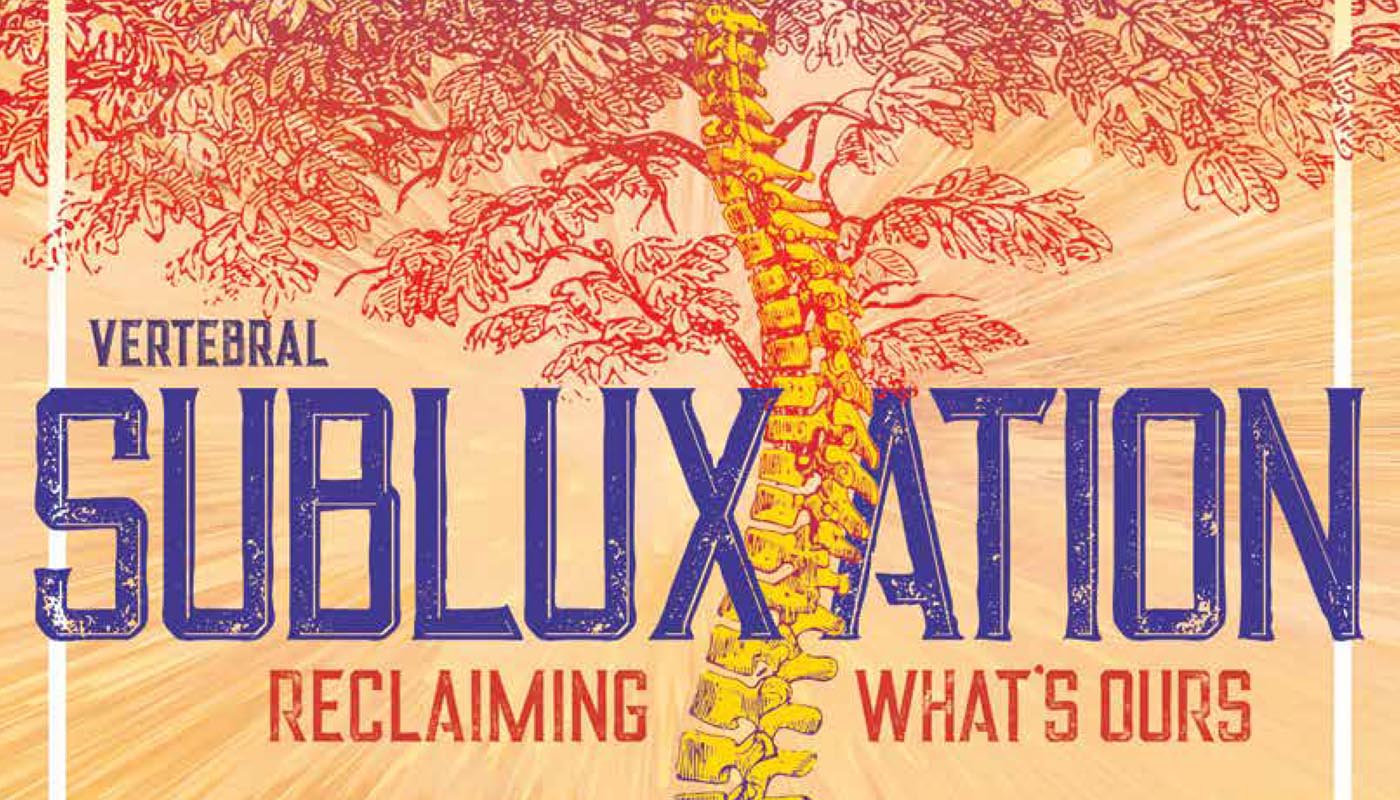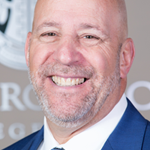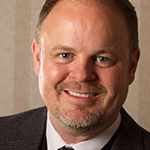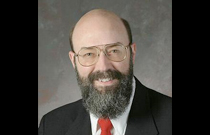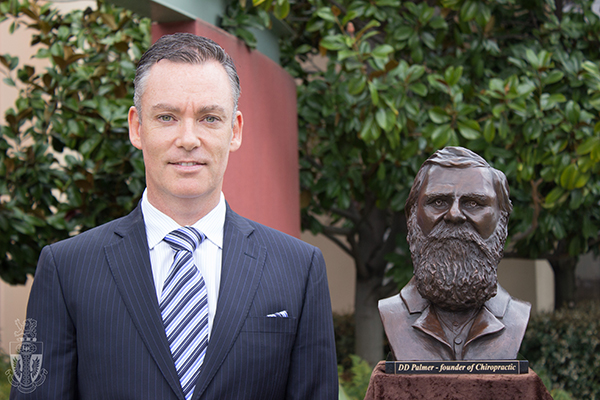We are taking our stand decisively, and we have asked leading members of our profession to frame their own position clearly and powerfully. We ask you to think about and question your own thoughts about this, and join the conversation.
Our chiropractic words do have both historical and present-day value. Instead of changing or deleting the very words our profession was built on, we must strengthen and build up those words so that their present-day value is as important or more important than it was in the past.
It is Life Chiropractic College West’s opinion that the word subluxation has never had more reasoning and rationale behind it in the last 123 years.
The chiropractic profession was built on sound science, philosophy and art. Among those tenets are our chiropractic principles, the vertebral subluxation and the adjustment. Where some chiropractors are looking to conform and be accepted by other health fields, the unique aspects of our profession lay within its actions and words, such as vertebral subluxation. Without our very own lexicon, chiropractic would never be where it is today—the largest natural healing profession in the world. To say our identity is not important would surely lead to professional destruction.
Some have written that the term vertebral subluxation is a historical word and should only be used within a historical context. They say it doesn’t have meaning in today’s world. That’s like taking the word “veterans” out of Veterans Day. When a word is erased, all of the properties and meaning that belong to that word are erased as well. To wipe out a profession, take away its lexicon. Then watch the roots deteriorate until the profession withers and dies.
The United States’ federal government recognizes the word subluxation, as does the Council on Chiropractic Education (CCE) and the Federation of Chiropractic Licensing Board (FCLB), both of which serve in educating and licensing graduates and doctors. If our colleges fail to understand and teach the phrase vertebral subluxation, their graduates will be lost when or if they become Medicare providers, since Medicare pays for only the detection and correction of vertebral subluxation.
At Life West, our chiropractic history has just as much meaning as our present and our future. You, our readers, can always count on Life West to engage in the controversial topics. We will not shy away. We want to preserve our history while we create our future. We are progressive, and we also honor our past.
As you read the comments from the thought-leaders in our profession, please know this … the conversation has begun.
– Dr. Ron Oberstein, President, Life Chiropractic College West
It’s always difficult for me when I’m teaching first-quarter students about vertebral subluxation and I get to the part where I have to tell them that there are some people–including those in our profession–who claim there is no such thing as a subluxation, or there is no proof that they exist. I introduce this in class after we have gone through the historical, philosophical and logical constructs of the vertebral subluxation, followed by the anatomical and neurophysiological specifics of the VS, which we support with research evidence and clinical applications.
In these basic foundational classes that we teach at Life West, we talk about the most fundamental concept of 1) some sort of spinal biomechanical dysfunction causing 2) some disruption in neurological function. While we talk about the safety-pin and normal complete cycles in class, we also apply them to subluxation concepts such as pain-gate mechanisms caused by spinal hypomobility, irritation of the spinal nerve roots in or around the IVF, distortion of the spinal cord due to stretching of the dentate ligaments and other dural tissue, and how these phenomena can cause pain, autonomic dysfunction, cognitive issues, or all of the above.
In class, I have to tell the students that, like it or not, there are those in our profession who deny the existence of the subluxation. I have to give them historical and philosophical context for why they say these things, and I teach them about common logical fallacies used by deniers in their attacks. We then develop and refine our critical thinking skills to intelligently defend from such attacks. Ultimately, it’s important for the student to understand that while the attack on the term subluxation may present itself as a scientific attack, it is actually a political one.
I am proud to be part of a school like Life West that is not compromising the principles of chiropractic for short-term political gain. For those of you connected with the college, I hope you are proud that Life West is teaching scientific chiropractic that is congruent with the founding principles of our beautiful and unique profession. The idea of the vertebral subluxation is an integral part of our identity. The chiropractor exists to locate, analyze and correct vertebral subluxations, because they and their patients understand that subluxations reduce quality of life, and life is better without them.
– Dr. Ankur Tayal, Life West Philosophy Chair
The term “vertebral subluxation” has an important place in the lexicon of the chiropractic profession as well as the larger health care community. As a descriptive term, it is unique in labeling an articulation that displays abnormal movement short of a dislocation accompanied by neurological aberration, the potential to lead to mal-adaptive states and adverse functional implications.
The term connotes a complex response to adverse proprioceptive influences and initiation of abnormal feedback cycles that tend to be self-reinforcing, extending beyond that of a local bio-mechanical fault. It is a nuanced and sophisticated term describing a complicated neuro-biomechanical condition not adequately embraced or appreciated with other terms or language.
– Dr. Gerry Clum, former president, Life West
Any profession worth merit has its unique lexicon, and chiropractic is no different. For over 123 years the chiropractic profession has had the detection, analysis, and specific scientific chiropractic adjustment of the vertebral subluxation as the centerpiece of its practice.
The subluxation is part of the definition of chiropractic in the vast majority of state statutes in America. The Council on Chiropractic Education (CCE), the Association of Chiropractic Colleges and even the World Health Organization all include subluxation in their standards and definitions.
Those within our profession who wish to do away with the term subluxation are attempting to erode the very foundation upon which our profession was predicated. The science and research of the detrimental effects of the subluxation and its component parts is irrefutable.
Those who desire to deny its existence are just as blindly choosing to ignore the ever-growing evidence.
The profession of chiropractic has always been and will continue to be about the detection, analysis and adjustment of the subluxation. Those within our profession who wish to change it by taking subluxation out of chiropractic should seek to join another profession.
– Dr. George Curry, President, International Chiropractors Association
I have studied the vertebral subluxation for more than 40 years, and have found that the vertebral subluxation is an orthopedic/neurologic/pathological entity that influences local neuro-biomechanics and systemic physiological health.
The science of the subluxation is advancing. Recent publications are showing relationships with sympathetic tone through levels of salivary amylase, glucose metabolism with radioactive tracers and PET scans, white blood cell telomere length, endocrinology influences, up-regulation of endogenous antioxidants, parasympathetic heart rate variability and more.
I have observed that it is important to make each new patient case unique to chiropractic, and making the vertebral subluxation the central component does just that.
History, tradition and terminology are important. As such, the term “subluxation” should always be the center of the chiropractic profession.
– Dr. Dan Murphy, international speaker and educator
I’d like to speak from two different vantage points.
As president of the Federation of Chiropractic Licensing Boards (FCLB), our model practice act definition of chiropractic subluxation is as follows:
“Chiropractic Subluxation means a biomechanical and/or physiological condition or disorder of the axial or appendicular body areas that result in neural compromise and organ system dysfunction.”
From a personal perspective as a practicing chiropractor without any official title, I feel it is imperative to keep the term vertebral subluxation at the forefront of the chiropractic lexicon today, tomorrow, and in the future. Chiropractic was built on its historical values, and words like subluxation, adjustment, and innate intelligence are defining what chiropractic is and always will be.”
– Dr. Maggie Colucci, President, Federation of Chiropractic Licensing Boards (FCLB)
Core Elements of the Cleveland Philosophy of Chiropractic:
• The body is a self-regulating and self-healing organism with an innate ability to adapt to a changing environment.
• The nervous system is the master system that regulates and controls all other organs and structures and relates the individual to his or her environment.
• Spinal biomechanical dysfunction in the form of a vertebral subluxation complex may adversely affect the nervous system’s ability to regulate function.
• The central focus of the doctor of chiropractic is to optimize patient health by correcting, managing or minimizing vertebral subluxation through the chiropractic spinal adjustment.
Rationale:
Central to the practice chiropractic is the determination of the primary region of joint dysfunction and site of application of the adjustive thrust and related adjunctive procedures. In chiropractic, this site of care is typically termed vertebral subluxation, described as a condition of disturbed joint biomechanics contributing to a complex of functional and/or structural pathological articular changes that may compromise neural integrity and influence health (ACC Paradigm).
Further, Medicare reimbursement requires the practitioner document at least two of the components of the PARTS acronym (Pain and Tenderness, Asymmetry, Range of Motion, Tissue Texture, Tone, Special Tests), and one of the two must be either the Asymmetry or Range of Motion. In addition, Medicare references the term Subluxation in its statute. Given that most DCs manage Medicare patients, the process for documentation embeds the concept of subluxation within the lexicon of chiropractic.
– Dr. Carl S. Cleveland III, President, Cleveland University Kansas City, College of Chiropractic
Yes, I feel the term “vertebral subluxation” has a place in the chiropractic lexicon. The science, art, and philosophy of chiropractic holds that subluxation of the spinal column and other articulations can affect nervous system function and the expression of health, which may result in symptoms, infirmity and disease. The understanding of the subluxation complex continues to progress from the Palmers’ early writings about misalignment of vertebrae and other articulating structures to now include additional anatomical, physiological, biomechanical, chemical and biopsychosocial factors. Palmer College’s laudable research commitment provides continuity and advancement of the concept, and underscores the relevance of these underpinnings of our profession’s theory and practice.
– Dr. Bill Meeker, President, Palmer College of Chiropractic, San Jose, California
Vertebral subluxation is a term used to describe the loss of normal joint integrity of two or more vertebrae with neurological compromise.
In my book, “Atlas of Common Subluxations of the Human Spine and Pelvis,” a study of 250 spines with x-rays proves that altering the vertebral column with a subluxation changes the shape of the spinal cord and is the source of loss of neurological integrity and osteoarthritis of the spine. Osteoarthritis is the number one debilitating disease worldwide.
Medicare and Social Security Disability both state that 85% of all claims are arthritis-related, which in the spine could be correlated to long-term vertebral subluxation. Most care is not directed to correcting the subluxated vertebrae, which makes this type of care irrational. I believe the opioid epidemic in some or most cases can be traced back to vertebral subluxation if it’s coming from the spine and nervous system. Most patients and other health professions are not taught about vertebral subluxation, and therefore the default for patients is suffering and taking opioid drugs because they never get to the underlying cause.
That’s how important it is to the public’s well-being to retain the term vertebral subluxation in the chiropractic lexicon, along with understanding, detecting and correcting it.
Dr. William Ruch, Author and Life West Adjunct Professor
Destroy the language, practices, and philosophy of any civilization or culture, and its destruction is eminent and complete.
The elimination of our terminology, the discounting of our philosophy, the dismantling of our specific techniques will accomplish what the Big Pharma and the Medical / Insurance Industrial complex has yet to do.
In attempts to be legitimate, accepted, mainstream or more marketable for greater profitability, segments of the profession that lack professional esteem have fought to morph and contort chiropractic.
Lack of understanding and pride in what our profession can contribute to humanity with the detection and correction of the vertebral subluxation devalues our separate, unique non-duplicated service.
True acceptance and validation can only be accomplished by playing our defined position on the health care team. If chiropractic is to take up a position on the team, it must be done as the subluxation detectors and correctors, not as the primary care provider-shortage substitutes.
The player that runs all over the field, rink or court, attempting to play all possible positions, is not welcomed on any team. If the desire is to achieve acceptance, acclaim and respect, simply be the best you can be at your position, removing subluxations.
The public’s understanding, gratitude, love and assigning-hero status lies with the removal of the interference to the communication system of the body. That interference is the subluxation.
– Dr. Robert De Bonis, Member, US Virgin Islands Board Of Chiropractic Examiners
Vertebral subluxation is a significant term that is part of chiropractic and Life Chiropractic College West’s vernacular as it ties to the history of chiropractic and the philosophy of the profession and college. Not only is it the language originally used by the profession’s founders, it is at the core of that which Life West and many other colleges teach to their students in order to understand the “what” and “why” for them to become chiropractors. In simplest terms, it’s about finding the misalignment in the spinal column that causes aberrant function within the nervous system. If our students do not understand why they are doing what they’re doing, their ability to be successful practitioners of chiropractic is limited. The body is a unique organism and the term summarizes the complexity of the disruption to the spine and neurological components. It serves as a focal point in conveying to students and patients the proper way to adjust to remove the neurological interference. The use of this lexicon is critical to creating knowledgeable graduates who can carry forward the work of the profession based on its founding principles, which has and will continue to impact the lives of millions upon millions of people.
– Pardeep Kullar, Ed.D., Vice President of Academic Affairs, Life West
The persistent debate about the validity of spinal subluxation needs to end. It is political agenda coupled with a lack of biomechanics and engineering education that inhibits the universal acceptance of contemporary subluxation concepts–not its inexistence!
Recently, my team and I have published numerous peer-reviewed studies demonstrating that “vertebral subluxation” is a legitimate, reliable, and valid entity with various structural types; these subluxation types satisfy criteria required for valid subluxation theory and scientific inquiry (of which investigations must continue). Some may wish to refer to these as “spinal displacement categories” instead of “vertebral subluxation,” which is nothing more than a semantics issue.
To quote my late father, Dr. Donald D. Harrison, DC, PhD, MSE: “Because pathological changes are caused by abnormal spinal loads and functional and/or structural changes are altered positions (statics and dynamics), subluxations must be described with rotations and translations in 3D as per mechanical engineering principles and not political agreement by those without education in mechanical engineering.”
So YES, subluxation has a place in the chiropractic lexicon.
– Dr. Deed E. Harrison, DC, Editor in Chief, The American Journal of Clinical Chiropractic
Language matters. A precise word with multiple meanings, vertebral subluxation is a relevant term today as it elegantly represents the physical-energetic duality that the consideration of health demands.
- Lux, a unit of illuminance
- Luxation, a complete separation of joints
Confusion abounds when disease modulation masquerades as health care. My daughter, at age 12 while learning compound words, conceptualized and articulated that if someone is to be a “healthy self,” then they must be able to “heal thy self.” Health is found in our capacity to successfully adapt to all input. Reducing subluxation is how we cast our light as a profession.
– Dr. Jeffrey N Scholten, President, NUCCA
Soon after starting my chiropractic practice in 1985, I realized that people were not coming to see me for another exam or diagnosis. They were sick, and they were seeking a doctor who had something different to offer. That unique “thing” was and still is the detection and specific correction of the vertebral subluxation, through a specific chiropractic adjustment.
Subluxation, when properly understood, embodies all of chiropractic philosophy and the practical application of it. This creates a thought platform, which informs clinical decision-making and scientific inquiry. It is critical that the profession not only retain the term subluxation; it must embrace it and inform the world that this entity is the basis for a unique approach to health care, which is life-saving and life-changing. The existence of the subluxation proved itself when my life was changed as an 18-year-old, and it has consistently proved itself in my office for over 33 years.
– Dr. Peter Amlinger, international speaker who has held many leadership positions in 34 years of chiropractic practice
The term subluxation not only has a place in the chiropractic lexicon, it is why chiropractic exists today. By definition, subluxation not only includes a misalignment between vertebrae, but also includes a neurological component caused by this misalignment, or that disrelationship is then something less than a subluxation. This is the essence of chiropractic and separates it from every other health care delivery system.
The “controlled act” of the adjustment of the subluxation is autonomous to chiropractic and is included in no other health care discipline. The science of detection and art of reduction of subluxations of the spine and spinal column is what chiropractic is. If subluxation is not in the chiropractic lexicon, chiropractic becomes a musculoskeletal manual therapy, not a health care delivery system with the capacity to have massive effects on nerve system function.
– Dr. C.M. Hardick, Chairman of MaxLiving
D.D. Palmer identified this as the unique phenomena that chiropractors address.
Although the precise understanding of the term subluxation varies based upon a spinal model or philosophical model that a person may have, nearly all who utilize the term within the chiropractic profession will agree that a subluxation includes both a biomechanical alteration of the spine with a related neurophysiological aberration.
Every profession has its own lexicon. While some have stated that subluxation is an antiquated term and has no scientific validation, I believe it is the clinical phenomena that chiropractors address. It is more valid today than in 1895. There are volumes of research validating its existence and effective correction in chiropractic practice.
Eliminating the term subluxation would relegate our profession to being another “modality” in the therapeutic process of treating disease. If chiropractic is to remain as a separate and distinct profession, we need to maintain a unique lexicon and objective.
– Dr. Peter J. Kevorkian, Chairman of the Board, Sherman College of Chiropractic and IFCO
It is common to fear what is not understood, to assimilate into the comforts of the mainstream, or to denounce what cannot be “proven.” Yet as chiropractors, what we have always known to be true, and the inspiration and motivation behind our craft in enhancing each patient’s expression of health, is addressing and correcting vertebral subluxation.
The focus and knowledge of vertebral subluxation is solely the hallmark of chiropractic care, just as the atom is the focus of origin to the physicist. The language of chiropractic may naturally adapt to hold more perspectives, but it should always include the term vertebral subluxation.
– Kyrah Bacote, Life West student


